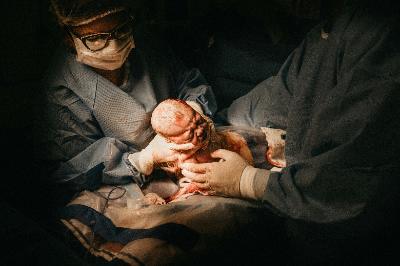Bringing a child into the world is one of the most beautiful and challenging experiences a woman can go through. For some, this journey includes a cesarean section, also known as a C-section. While the procedure is common, there are many misconceptions and fears surrounding it. In this article, we will explore the C-section experience, from the decision to have one to the recovery process, and everything in between.
Understanding the C-Section Procedure
A cesarean section is a surgical procedure in which a baby is delivered through an incision in the mother’s abdomen and uterus. There are various reasons why a C-section may be necessary, including complications during labor, the baby’s position, or maternal health concerns. It is important to remember that a C-section is a safe and routine procedure, with trained medical professionals guiding you every step of the way.
When is a C-Section Necessary?
There are several scenarios in which a C-section may be recommended by your healthcare provider. These include:
- Failure to progress in labor
- Fetal distress
- Breech presentation
- Placenta previa
- Maternal health concerns
If you have been informed that a C-section is necessary for the health and safety of you and your baby, it is important to trust your healthcare provider’s expertise and follow their recommendations.
Preparing for a C-Section

Once the decision has been made to have a C-section, there are several steps you can take to prepare for the procedure. These include:
- Discussing the procedure with your healthcare provider
- Creating a birth plan that includes your preferences for the C-section
- Arranging for childcare and support during your recovery period
- Packing a hospital bag with essentials for you and your baby
It is important to remember that every C-section experience is unique, and it is okay to feel nervous or anxious about the procedure. Talking to other mothers who have had a C-section can also provide valuable insight and support.
The C-Section Experience
On the day of your scheduled C-section, you will be admitted to the hospital and prepped for surgery. The procedure typically takes about 30 minutes, during which time you will be given anesthesia to numb the lower half of your body. Your healthcare team will monitor you and your baby throughout the surgery to ensure a safe delivery.
After the baby is born, you may feel a range of emotions, from relief to excitement to exhaustion. It is important to take time to bond with your baby and rest as needed. Your healthcare team will provide guidance on caring for yourself and your newborn in the days following the C-section.
Recovery and Postpartum Care

Recovering from a C-section can take time and patience. Your healthcare provider will provide guidance on caring for your incision, managing pain, and gradually resuming daily activities. It is important to listen to your body and ask for help when needed during this time.
Postpartum care after a C-section may include:
- Monitoring your incision for signs of infection
- Taking pain medication as prescribed
- Gradually increasing physical activity
- Attending follow-up appointments with your healthcare provider
Remember that recovery is a gradual process, and it is okay to take things one day at a time. Reach out to your support system for help and encouragement as you navigate the challenges of postpartum recovery.
Emotional Well-Being After a C-Section
It is common for women to experience a range of emotions after a C-section, including sadness, guilt, and anxiety. It is important to talk to your healthcare provider or a mental health professional if you are struggling with your emotional well-being. Seeking support from loved ones and joining a support group for mothers who have had a C-section can also provide valuable comfort and understanding.
Conclusion: Embracing the C-Section Journey
The journey to motherhood is a unique and transformative experience, regardless of how your baby is brought into the world. A cesarean section is a safe and common procedure that can provide a positive outcome for you and your baby. By understanding the C-section process, preparing for the procedure, and embracing the recovery journey, you can navigate the challenges of motherhood with confidence and grace.
Remember that you are not alone on this journey. Reach out to your healthcare provider, loved ones, and fellow mothers for support and guidance as you navigate the C-section experience. Embrace the joys and challenges of motherhood, and trust in your strength and resilience as a new mother.
References:
1. American College of Obstetricians and Gynecologists. “Cesarean Birth” https://www.acog.org/womens-health/faqs/cesarean-birth
2. Mayo Clinic. “Cesarean Section” https://www.mayoclinic.org/tests-procedures/c-section/about/pac-20393655







































